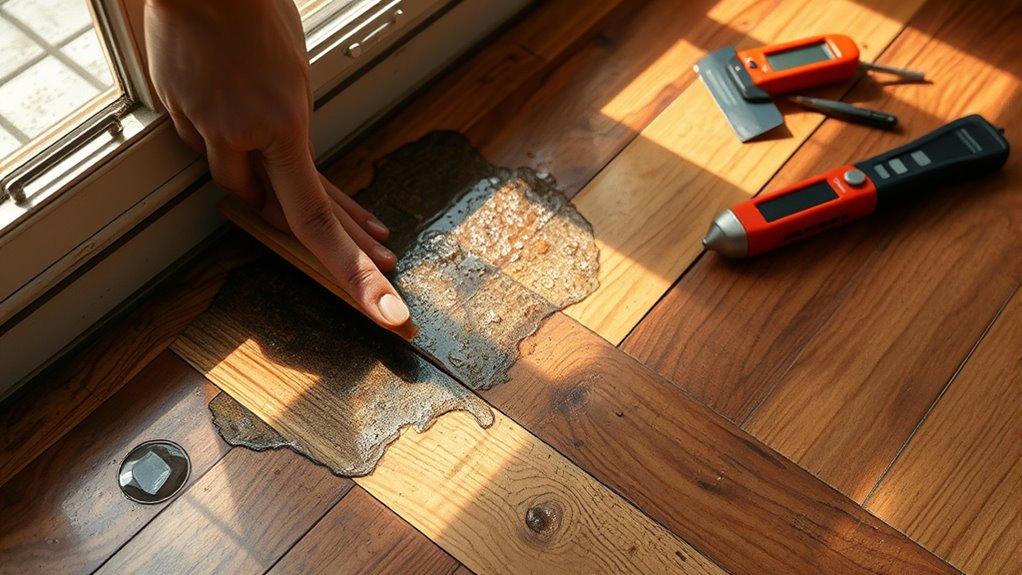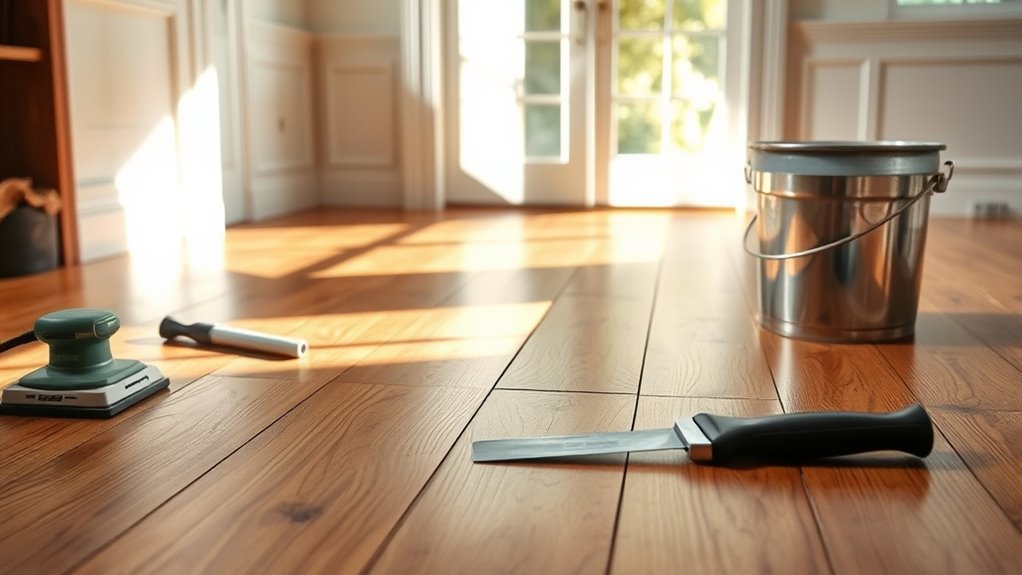First, carefully assess the damage by inspecting for warping, discoloration, and measuring moisture levels. Next, thoroughly dry the area using fans, dehumidifiers, and by increasing ventilation, while removing any standing water and furniture. Finally, replace severely damaged boards, sand the floor smoothly, and apply a protective finish to restore its appearance and durability. Taking these precise steps guarantees your floor’s integrity, and you’ll uncover more detailed techniques to perfect the restoration process as you go.
Assessing the Extent of Water Damage

Before you begin repairs, you need to carefully evaluate the extent of the water damage to your wood floor. Start by identifying damage visually—look for discoloration, warping, or cupping in the planks. Don’t overlook subtle signs like slight swelling or soft spots, which indicate deeper issues. Use a reliable moisture detection tool to measure the moisture content in the wood. This step is essential; it helps determine how far the water has penetrated and whether the subfloor is affected. Systematically check across multiple areas, noting variations in moisture levels. By methodically identifying damage and evaluating moisture, you gain the freedom to decide whether repairs are sufficient or full replacement is necessary. This thorough evaluation sets the foundation for effective restoration.
Drying and Preparing the Affected Area
Once you’ve assessed the damage, you’ll need to thoroughly dry the affected area to prevent mold growth and further deterioration. Start by removing any standing water using a wet/dry vacuum or absorbent towels. Next, apply drying techniques such as using fans, dehumidifiers, and opening windows to promote airflow and reduce moisture content. Monitor humidity levels closely; aim for below 60% to inhibit mold development. As part of your preparation steps, clear the area of furniture and rugs to expose the floor fully. Inspect the subfloor for dampness, since hidden moisture can compromise repairs. Finally, allow sufficient drying time—often 48 to 72 hours—before proceeding. Proper drying and preparation guarantee a stable foundation for restoring your wood floor and maintaining your home’s freedom from ongoing damage.
Repairing and Refinishing the Wood Floor

Begin by evaluating the extent of damage to determine whether you need to replace individual boards or can simply sand and refinish the surface. Once assessed, follow these repair methods for effective restoration:
- Replace any severely warped or rotted boards to maintain structural integrity.
- Sand the entire floor using appropriate refinishing techniques, starting with coarse grit and progressing to finer grits for smoothness.
- Apply stain and multiple coats of polyurethane or a water-resistant finish to protect and enhance the wood’s appearance.




